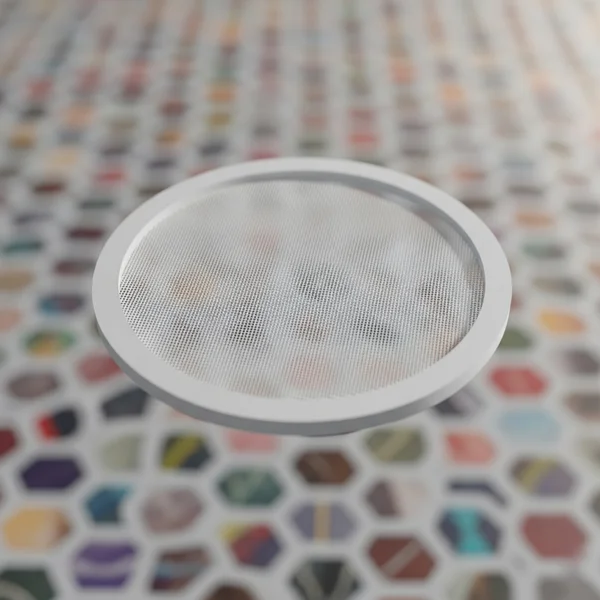What is the AQ Test (Autism Spectrum Quotient)?
Understanding ourselves and our unique traits is a journey many of us embark on. If you've ever wondered about certain aspects of your social interactions, communication style, or how you perceive the world, you might be curious about tools that can offer some insight. What is the Autism Spectrum Quotient (AQ) Test, and how can it help in this exploration? This comprehensive guide will delve into the AQ Test, explaining its origins, purpose, what it measures, and who it's for, helping you understand if this autism self-assessment tool could be a useful first step for you.
Perhaps you're asking, how can an AQ test help me? The AQ Test is designed to measure the extent of autistic traits in adults and adolescents. It’s a valuable resource for those seeking a preliminary understanding of where they might fall on a spectrum of traits commonly associated with autism.
What is the Autism Spectrum Quotient (AQ) Test?
So, what exactly is the AQ Test? The Autism Spectrum Quotient (AQ) Test is a self-report questionnaire consisting of 50 questions. It was designed to quantify the degree to which an adult or adolescent (aged 16 and above) with normal intelligence possesses traits typically associated with the autism spectrum. It's important to understand that the AQ measures traits, not a disorder itself. Many people exhibit some of these traits to varying degrees, and this is part of natural human variation, often referred to within the concept of neurodiversity.
The goal of the Autism Spectrum Quotient is not to provide a diagnosis, but rather to offer a score that indicates the level of these traits. This can be a helpful starting point for self-reflection or for deciding whether to seek a formal clinical assessment. You can explore the AQ test further on our site.
Origins: The AQ Test Developed by Cambridge University
Who developed the AQ test? The credibility of any assessment tool often lies in its origins. The AQ Test was developed by Professor Simon Baron-Cohen and his colleagues at the Autism Research Centre (ARC) at the University of Cambridge in 2001. This renowned research institution is dedicated to understanding the biomedical causes of autism spectrum conditions and developing new and validated methods for assessment and support.

The development of this Cambridge University autism test was a significant step in providing a standardized, quantifiable measure for autistic traits that could be easily administered. Its scientific basis and a considerable body of research support its use as a screening instrument.
Who is the AQ Test Designed For? (Adults & Adolescents 16+)
A common question is, is the AQ test for adults? Yes, the AQ Test is specifically designed and validated for use by adults and adolescents aged 16 years and older with an IQ in the normal range. It is not intended for use with younger children, as the questions and their relevance are tailored to the experiences and self-awareness typically present from adolescence onwards.
Why is the AQ Test for ages 16 and up? The developmental stage of individuals aged 16 and above generally allows for more reliable self-reporting on the types of social, communicative, and cognitive traits the AQ Test assesses. For adults seeking self-understanding or parents and educators concerned about older teens, the AQ can offer valuable preliminary insights. If you meet these criteria, you might consider taking an online AQ test.
Key Areas Assessed by the Autism Spectrum Quotient Test
What does the AQ test measure? The AQ Test assesses traits across five key areas, each contributing to the overall score. Understanding these dimensions can help you appreciate what the test is looking into:

- Social Skills: This dimension looks at an individual's comfort and proficiency in social situations. For example, finding it easy to meet new people or enjoying social chit-chat.
- Communication Patterns: This assesses verbal and non-verbal communication preferences and abilities. It might include questions about understanding subtleties in conversation or preferring direct language.
- Imagination: This area explores imaginative abilities and the tendency towards repetitive behaviors or interests. For instance, enjoying fiction versus factual information, or having very strong, specific interests.
- Attention to Detail / Focus Switching: This dimension measures a preference for detail and patterns, and an individual's ability to switch attention. Someone scoring higher in this area might notice small details others miss or find it difficult to shift focus once engaged in a task.
- Tolerance of Change / Preference for Sameness: This looks at how an individual copes with changes in routine and their preference for predictability. For example, feeling comfortable with unexpected events versus preferring a structured day.
These dimensions reflect common characteristics observed in individuals on the autism spectrum, though, again, possessing some of these traits is common in the general population.
Benefits of Taking an Online AQ Test for Self-Assessment
So, how can an AQ test help me specifically? Taking an online AQ test for autism self-assessment can offer several benefits:
- Gaining Initial Insights: It provides a structured way to reflect on your traits and see how they compare to patterns often associated with autism.
- A Free Tool for Personal Exploration: Our free online autism spectrum test offers an accessible way to begin this exploration without immediate financial or logistical barriers.
- Facilitating Conversations: The results can be a useful starting point for discussions with friends, family, or mental health professionals if you choose to seek further advice.
- Promoting Self-Awareness and Understanding: Regardless of the score, the process of taking the test can enhance your understanding oneself and your unique way of experiencing the world.
Understanding Limitations: The AQ Test as a Screening Tool
While the AQ Test is a valuable tool, it's crucial to understand its limitations. Is the AQ test a diagnostic tool? No, it is not. The AQ Test is a screening tool.

This means:
- Not a Diagnostic Instrument: A high score on the AQ Test does not mean you have autism spectrum disorder (ASD). Similarly, a low score does not definitively rule it out.
- Requires Professional Clinical Assessment: A formal diagnosis of ASD can only be made by qualified healthcare professionals (like psychologists or psychiatrists) through comprehensive evaluations, which may include clinical interviews, behavioral observations, and other assessment tools.
- Provides an Indication, Not a Certainty: The AQ Test gives an indication of the number of autistic traits you report. It’s one piece of a much larger puzzle.
It's important to view the AQ Test as one of many resources that can contribute to your journey of self-discovery or help you decide on next steps.
The AQ Test: Your First Step to Understanding Autistic Traits?
The Autism Spectrum Quotient (AQ) Test is a well-regarded, scientifically developed tool that offers a valuable opportunity for self-reflection for adults and older adolescents. By measuring traits across key dimensions, it can provide initial insights and serve as a springboard for further understanding or professional consultation. Remember, it's a screening tool, not a diagnostic one, but its accessibility as an online autism test makes it a useful starting point for many.
Are you ready to explore your traits? Consider taking our free AQ test to learn more about yourself.
Frequently Asked Questions (FAQ)
Is the AQ test a diagnosis for autism?
No, the AQ Test is not a diagnostic tool. It is a self-assessment questionnaire designed to measure the extent of autistic traits. A formal diagnosis can only be made by a qualified healthcare professional after a comprehensive evaluation. If you are seeking a diagnosis, we encourage you to consult with a professional after exploring our resources.
How accurate is the Autism Spectrum Quotient test?
The AQ Test is considered a reliable and validated screening tool when used for its intended purpose – measuring autistic traits in adults and adolescents (16+) with normal intelligence. Its accuracy as a screener is well-documented in research. However, accuracy for diagnosis is not its aim. Many factors can influence an individual's score, and it should be interpreted with caution and ideally discussed with a professional if concerns arise.
Can I take the AQ test if I'm under 16?
The AQ Test was specifically designed and validated for individuals aged 16 and older. The questions and their relevance are more suited to the self-awareness and life experiences of older adolescents and adults. For concerns about individuals younger than 16, it is best to consult with pediatricians or child psychologists who can recommend age-appropriate assessments.
What does the AQ test measure in simple terms?
In simple terms, the AQ Test measures how many traits commonly associated with the autism spectrum an individual reports. These traits relate to social skills, communication, attention to detail, imagination, and tolerance of change. It helps provide a snapshot of these characteristics. You can learn more about what the AQ Test assesses on our website.
Who developed the AQ test and why?
The AQ Test was developed by Professor Simon Baron-Cohen and his team at the University of Cambridge's Autism Research Centre. They created it to provide a quantifiable and standardized way to measure autistic traits in adults for research and as an initial screening tool.